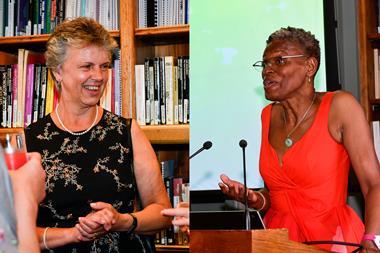Researchers in the US have discovered that viruses can control the orientation of liquid crystals
Researchers in the US have discovered that viruses can control the orientation of liquid crystals. Harnessing this ability could aid the development of nanomaterials and biosensors, they claim.
Nicholas Abbott and colleagues at the University of Wisconsin, Madison, deposited a commonly-used liquid crystal, 4-cyano-4’-pentylbiphenyl (5CB), onto gold surfaces that were covered with a layer of one of four different viruses. These four viruses - adenovirus (ADV), influenza virus (IFV), La Crosse virus (LACV) and vesicular stomatitis virus (VSV) - are all around 100nm in diameter, but have different chemical structures and different shapes - IFV and LACV are both spherical, while VSV is bullet-shaped and ADV is an icosahedron.
To investigate whether the viruses’ shape and chemical structure affected the orientation of 5CB, Abbott’s team shone light onto the virus-covered gold. By measuring the deflected light, Abbott concluded that surfaces covered with IFV, LACV and VSV, caused 5CB to align itself perpendicular to the surface boundary. But on ADV-covered surfaces 5CB was ordered parallel to the surface boundary.
This finding implies that the chemical structure of the virus, not the shape, effects the orientation of 5CB, Abbott claims. The one common factor linking IFV, LACV and VSV is that they are all surrounded by a lipid membrane, which ADV lacks.
Abbott claims it should be possible to incorporate ordered arrays of liquid crystals into other nanomaterials using this discovery. The results also raise the possibility of detecting viruses with liquid crystals, he said.
Jon Evans
References
et alNano Letters (DOI: 10.1021/nl060625g)






No comments yet